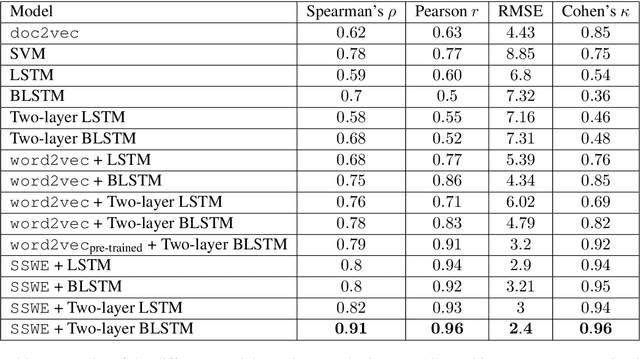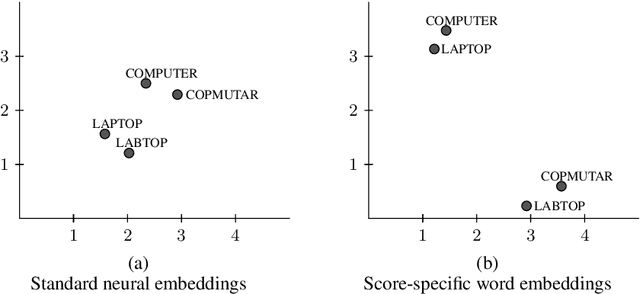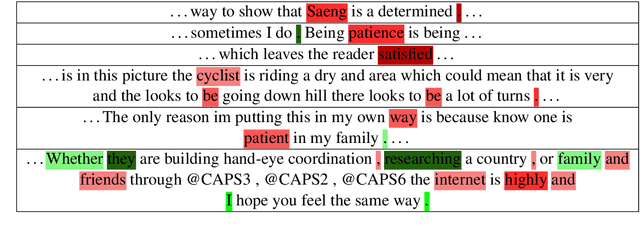Automatic Text Scoring Using Neural Networks
Paper and Code
Jun 16, 2016



Automated Text Scoring (ATS) provides a cost-effective and consistent alternative to human marking. However, in order to achieve good performance, the predictive features of the system need to be manually engineered by human experts. We introduce a model that forms word representations by learning the extent to which specific words contribute to the text's score. Using Long-Short Term Memory networks to represent the meaning of texts, we demonstrate that a fully automated framework is able to achieve excellent results over similar approaches. In an attempt to make our results more interpretable, and inspired by recent advances in visualizing neural networks, we introduce a novel method for identifying the regions of the text that the model has found more discriminative.
 Add to Chrome
Add to Chrome Add to Firefox
Add to Firefox Add to Edge
Add to Edge